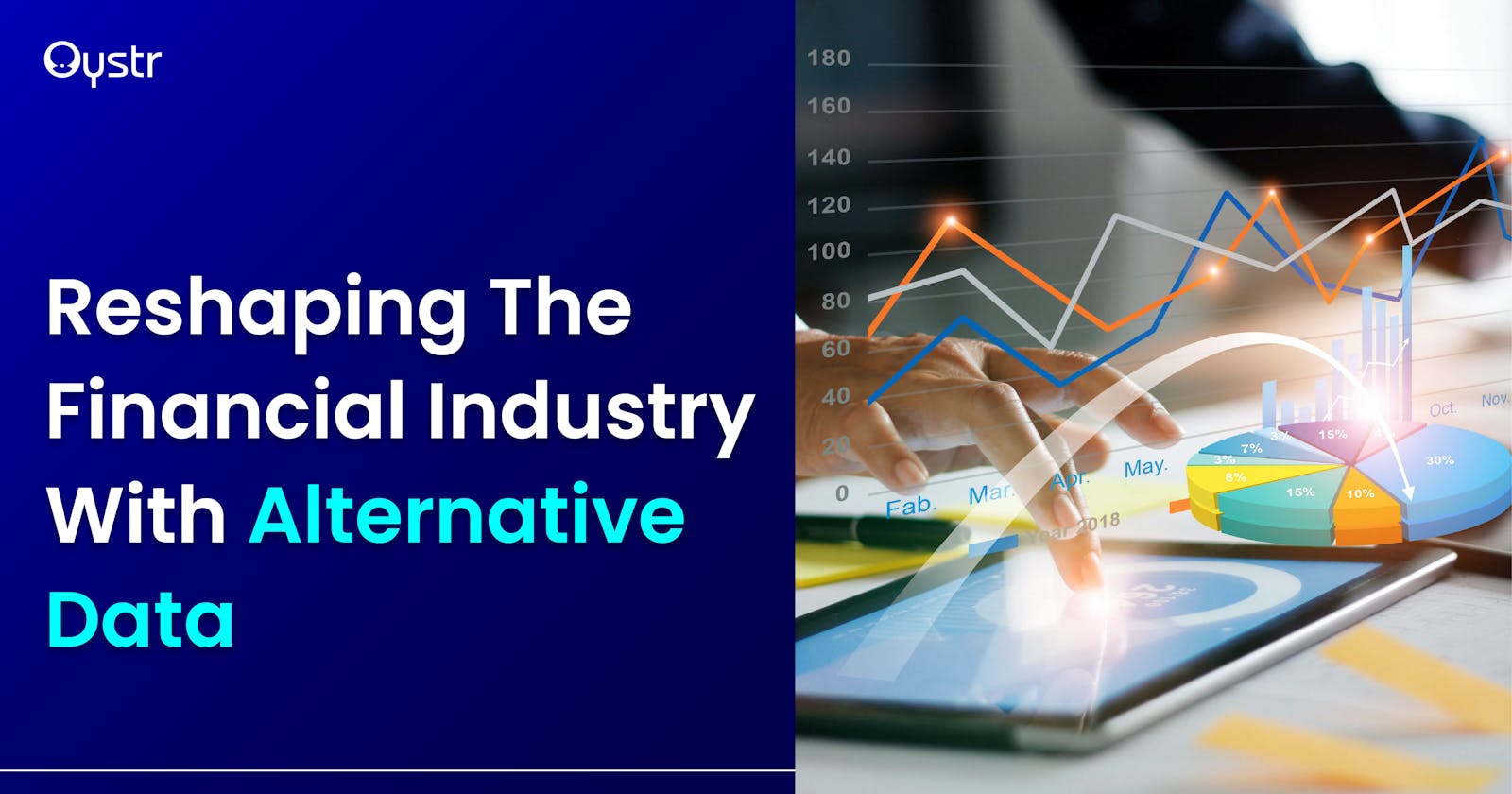We can't deny the efficiency of alternative data over the last decade. Its efficacy has shown itself in investment trends, market opportunities, KYC requirements, empowering underserved communities, and aiding financial inclusion.
During and after the COVID-19 era, many financial institutions had seen the relevance of alternative data. For example, in credit scoring, some financial institutions had higher bad debt, as the traditional credit scoring didn't encapsulate the current situation of their customers.
Beyond that, SMEs' credit and business profiles have changed significantly over the last few years as more institutions leverage alternative data. As a result, the impact of the information gap is more significant than ever, as traditional information means were unavailable or insufficient.
Let's examine these changes in the finance industry as alternative data continues to change the landscape.

Changes In Financial Markets With Alternative Data
Alternative data drives performance and change the way you do business. It is significantly impacting the whole financial ecosystem. We can see it clearly in financial investments, banks/lending opportunities, financial inclusion, and more.
For Banks & Lenders
Alternative data is as essential as ever, mainly because more consumers are moving online. As a result, banks & credit unions need to find new ways to collect and analyze alternative data to help improve their success with customers in today's highly competitive marketplace. Alternative data aggregations can also help increase efficiency by assisting businesses in identifying trends in how customers use their products.
How Do Banks and Lenders Use Alternative Data?
Meeting KYC Requirements
Banks, lenders and BNPL companies might discover development opportunities by analyzing existing connections and understanding their most valuable customers more.
Therefore, it is critical to keep customer information current because it is one of the essential resources.
Data that is meaningful and up to date must be able to adapt to the market's ever-changing expectations. Customers' information revealing early warning indicators and significant life transitions is required.
Alternative data to a banking service provider provides this transparency. It gives a complete picture of customers and identifies hidden trends that traditional data (including marketing data) may ignore.
A consumer's life is more than just budgeting and bill paying. Marketers can reach their objectives more effectively by utilizing "economic value" insights. These various data sets provide a richer, more specific context to ensure it reaches the right customers.
Discovering New Market Segments
Due to the high cost of advertising and the fierce competition in the financial services industry, it is essential to hone the most promising leads.
As direct mail and traditional media continue to earn the lion's share of advertising spending, targeting is critical in the banking business.
Traditional data is a great place to start for a marketer, but it may not be enough to provide a whole picture. Supplement your marketing data with alternative data such as previous addresses, occupations, education, interests, assets, court cases, and associated relationships to gain a more complete picture of a potential customer.
Individual-level data can disclose more about a person's family, occupation, education, economic trajectory, and negative experiences. It all contributes to a complete image of a potential buyer.
When applied to a single identity, sophisticated linking offers information about that person's friends and family members, such as their identities, income levels, and other personal characteristics. Financial organizations utilize this information to refresh their lists of potential clients and uncover new sources of referral business to get the most out of their marketing budgets.
Marketers will be able to target their messaging and create more appealing promotions more precisely due to access to this information.
Expand Small Business Portfolios
Financial institutions looking to broaden their customer base and increase revenue must target promising small businesses (SMEs). Many businesses' present clients own or have close relationships with a small business, creating opportunities for up-sells and cross-sell across a wide range of sectors.
Moreover, alternative data helped small businesses get easier access to funding from banks. Discovering the link between a financial institution's customer portfolio and a potential small business opportunity can increase market share, revenues, and long-term connections.
For most financial institutions, the real challenge is in differentiating between safe investments and those that could be profitable. Self-financing and an absence of a conventional borrowing history are prevalent for small businesses. It can be challenging for banks and other lenders to evaluate a company's trustworthiness as a borrower and the associated risk if they don't have access to the company's credit history.
There are times when investors require more sophisticated information about a company's performance than they can get through traditional financial payment sources, and that's when alternative sources can step in. The findings form the foundation for long-term budget preparation. By learning more about a customer's household, relatives, friends, and neighbours, marketers can better pinpoint those clients who pose the most risk to their business.
Taken as a whole, these supplemental pieces of data significantly broaden the scope of your marketing to include more clients and the small businesses they own, increasing your ROI.

Alternative Data as an Enabler of The Mobile Money Ecosystem
MMOs can reach nearly 1.6 billion additional retail clients in developing nations by boosting the number of loans to individuals and enterprises by $2.1 trillion.
With the rise of mobile money and other fintech advancements, the volume of ecosystem transactions in sub-Saharan Africa has skyrocketed over the past seven years. Critical industries like agriculture, utilities, education, health care, and logistics have benefited from the monetary movement between consumers and enterprises.
Mobile money services have been a major equalizer in the banking sector, expanding access to financial services to previously unreachable demographics.
The providers of these commodities may see a boost of as much as $4.2 trillion in their financial standings if they had access to possible new revenue streams.
The massively multiplayer online game industry is a potential avenue for financial institutions to connect with the unbanked. In addition, organizations can create new business models (including data-driven financial services, micropayments, and cutting-edge digital enterprises) by leveraging the alternative data made available by MMOs. As a result, the financial services industry will see an annual direct cost reduction of $400 billion.
Offering financial services via mobile money services may be the most efficient and scalable option to reach those with low incomes or underrepresented communities.
The mobile money ecosystem needs to be accelerated for these unreached demographic groups, and alternative data is enabling it. Instead of encouraging more people to get bank accounts, alternative data provides a solution to the identity crisis the unbanked face.
More opportunities to provide credit to the unbanked appear when their identities can be verified through a mobile money program. In addition, Oystr Finance still collaborates with local agents across Africa to streamline the process of providing loans to locals.

Closing The Financial Inclusion Gap
Utilizing alternative data and cutting-edge technologies is a primary priority for financial inclusion-focused financial institutions. Many institutions plan to enhance financial inclusion activities through technical and business model innovation in the coming year.
The key goals of financial inclusion efforts include:
- Worker financial stability.
- Increasing services to underserved communities.
- Teaching the public about money management.
Alternative data strategically closes the financial inclusion gap in unbanked or underserved areas. Using Financial Identity as a Service (Like Oystr Finance does), alternative data can provide identities to the previously excluded.
In addition to credit, alternative data contributes to the formation and establishment of financial identities for the disadvantaged. It assists those who do not have access to traditional banking services by providing financial institutions (FIs) with the information they need to reach out to them.
Financial organizations generally require various information from individuals and corporations to access certain financial services. People who are financially marginalized, on the other hand, frequently lack this understanding. Therefore, alternative data and analytics are utilized to create a unique identification to provide them with financial services.
Conclusion
Alternative data has opened new doors and opportunities in the financial industry. Fintech or organizations that miss the opportunity to leverage this data will miss out on new markets and other vital opportunities.
Oystr Finance is a large alternative data provider in Africa, helping financial institutions serve customers better. Visit our website to learn more.

